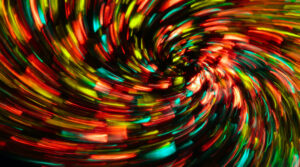Researchers investigate dark photons as alternatives to dark matter, aiming to detect these particles through experiments involving the conversion of light.
Since Frank Zwicky’s discovery of the unusually high speeds at which stars move in the outer regions of galaxies, scientists have speculated that the Universe contains a mysterious substance of unknown origin. Dark matter, which is about five times more abundant than ordinary matter, has been difficult to directly observe as it does not reflect light. Instead, scientists have only been able to measure its gravitational effect on other matter.
As a result, and despite its abundance, researchers are still uncertain as to what elementary particles make it up. For a long time, physicists considered weakly interacting massive particles, or WIMPs, as the most probable candidate. The popularity of the WIMP hypothesis has led scientists around the world to conduct a large number of experiments to detect these dark matter particles, but neither ground-based nor satellite experiments have yet yielded any positive results, encouraging many scientists to explore possible alternatives.
One of the most popular of these alternatives are hypothetical elementary particles known as dark photons, whose properties, such as an intrinsic angular momentum called spin, are expected to be similar to those of ordinary photons — the particles that make up light.
“Dark photons are a hypothetical relative of photons and are often assumed to be massive, unlike massless photons,” explained Akira Miyazaki, a researcher in the Department of Physics and Astronomy at Uppsala University, in an email.
Transforming particles
An important property of dark photons is their ability to transform into ordinary photons and vice versa without any external influence. This phenomenon is known to scientists from the study of neutrinos, and is similar to the behavior of three types of these particles, which undergo transformations amongst themselves.
This prompted the physicists to look for dark photons in a type of experiment called “light shining through a wall”. The main idea behind these studies is that photons, when confined in an impenetrable container, have a certain probability, of becoming dark photons, which interact very weakly with the container’s walls that are made of ordinary matter.
It is this interaction that results in the incident light being reflected back, causing it to remain trapped in the container. However, dark photons don’t interact with ordinary matter in the same way. In the absence of such an interaction, dark photons should be able to leave the container and spontaneously turn back into ordinary photons, which can be detected by conventional electromagnetic radiation detectors located outside the container. From an observer’s point of view, it would appear as if light from inside the container had miraculously broken through its walls.
In a recent article published in Annalen der Physik, Miyazaki and his colleagues explored the possibility of using a detector to detect light with properties that would correspond to the process of converting light into dark photons and vice versa of interest, if the mass of the dark photon is about nine to ten orders of magnitude less than the mass electron. This mass range is interesting because it aligns with theoretical considerations and is consistent with both astronomical observations and laboratory experiments.
Detecting dark photons
In their study, the physicists were able to experimentally demonstrate that modern detectors, specifically a spectrum analyzer and a signal generator located at the Karlsruhe Research Accelerator, can capture the expected signal from the conversion of electromagnetic radiation to dark photons and back. They successfully showed that the noise in the detector circuits can be significantly suppressed, making the signal clearly visible in this type of experiment.
However, despite these encouraging indications that we indeed can detect dark photons, in addition to a very sensitive detector, a powerful source of electromagnetic radiation is needed for a real experiment, since the expected probability of a single photon turning into a dark photon is very small, resulting in an extremely weak signal generated by insufficiently powerful electromagnetic radiation in the container.
To generate a sufficiently strong signal, the team proposed using a specialized type of generator called a gyrotron, which is capable of generating up to one megawatt of electromagnetic radiation. These sources are so powerful that they are used to heat the plasma in the ITER, the largest fusion reactor built to date.
Hopefully, an operating experimental facility will be constructed in the near future, allowing hypothesis put forth in the current study to be tested in practice, as the discovery of dark photons would have a huge impact on our understanding of fundamental physics.
“The discovery absolutely means a revolution of particle physics and deserves a Nobel Prize,” concluded Miyazaki. “If this is really the case, it will totally change our understanding of the Universe. A lot of plausible extensions of the Standard Model, in particular Superstring Theory and Grand Unified Theory, naturally contain dark photons of unknown mass and interaction to our world.”
Reference: Akira Miyazaki et al, Millimeter-Wave WISP Search with Coherent Light-Shining-Through-a-Wall Toward the STAX Project, Annalen der Physik (2023), DOI: 10.1002/andp.202200619.
Feature image credit: Luca Iaconelli on Unsplash












+ There are no comments
Add yours